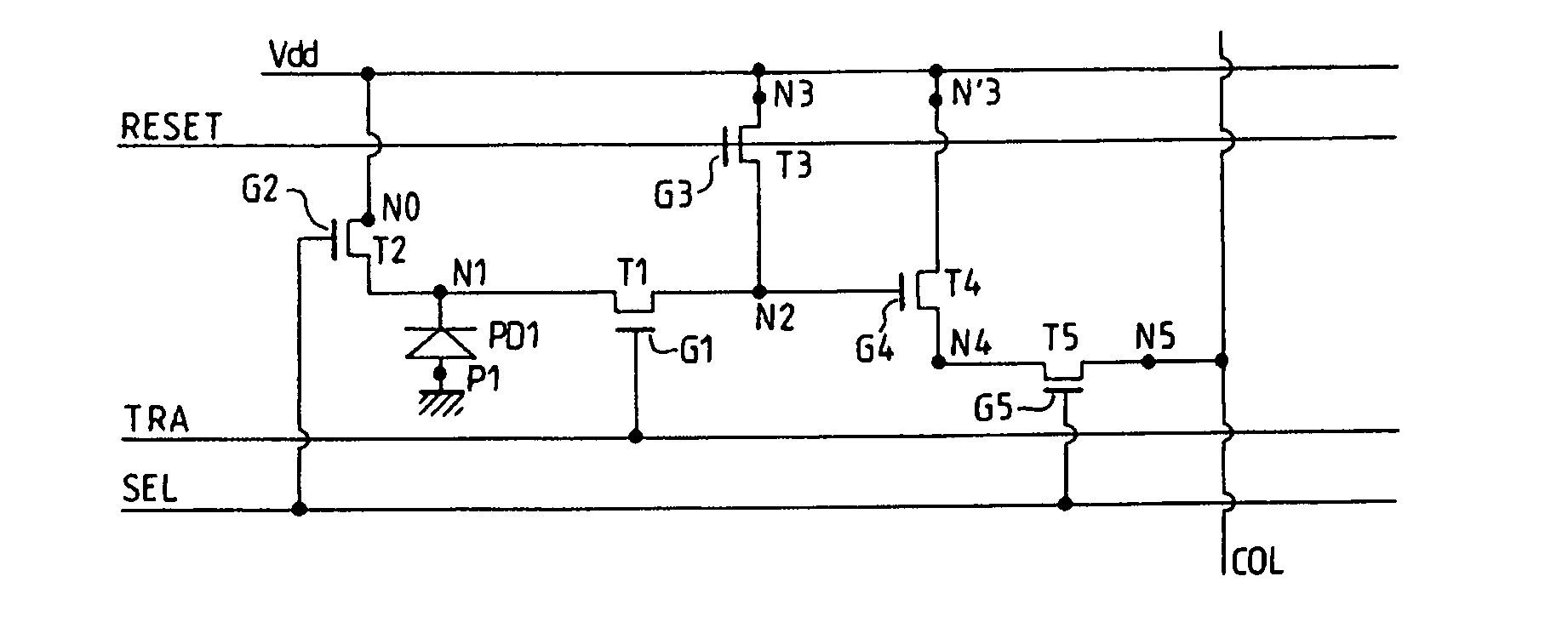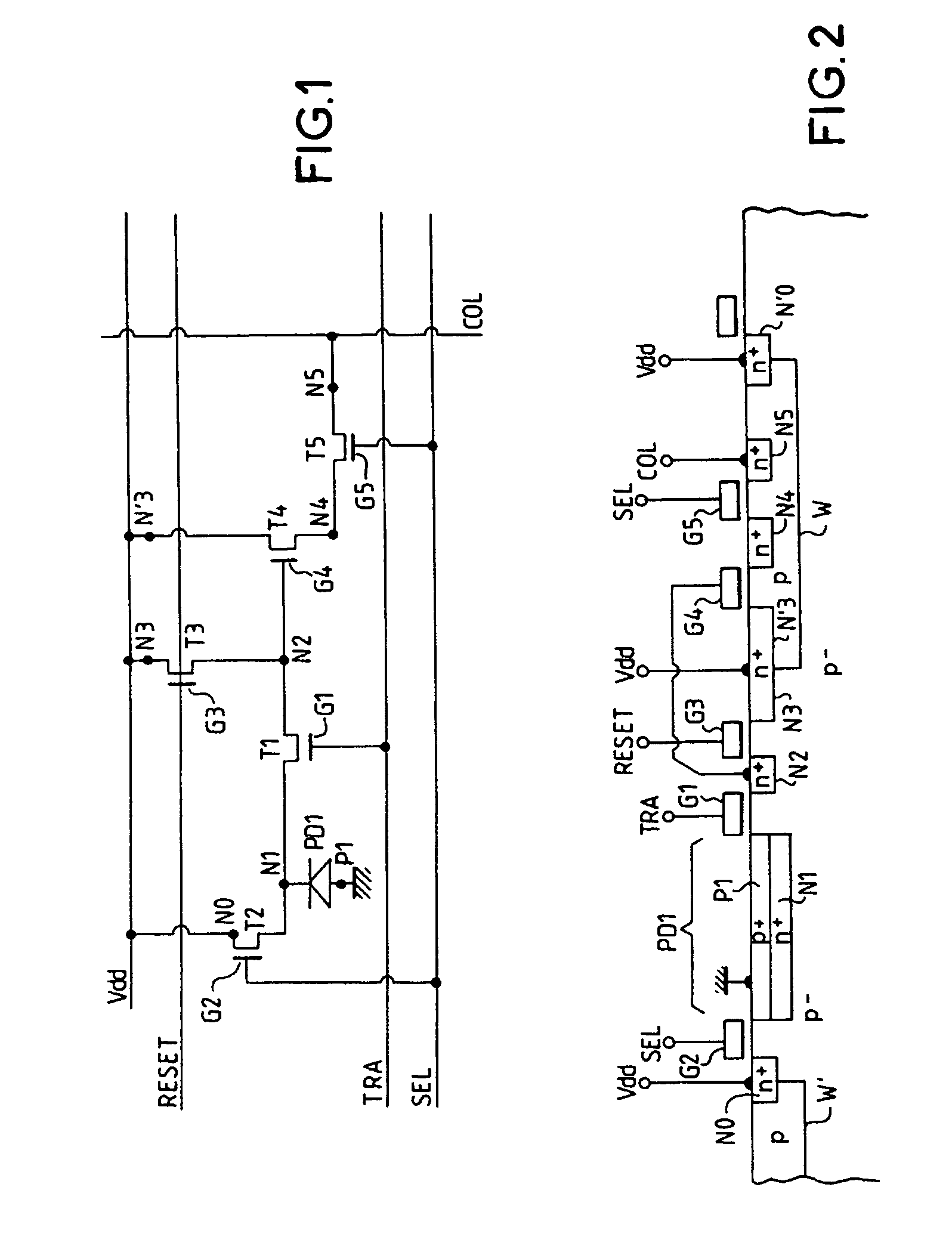Matrix image recorder with image sensor and a plurality of row conductors
a matrix image and sensor technology, applied in the field of matrix image sensors, can solve the problems of reducing the sensitivity of a given pixel size, increasing the pixel size, and not allowing easy separation between images, so as to achieve good compromise and improve the pixel structure
- Summary
- Abstract
- Description
- Claims
- Application Information
AI Technical Summary
Benefits of technology
Problems solved by technology
Method used
Image
Examples
Embodiment Construction
[0027]The matrix image sensor is formed on a semiconductor substrate of p-type conductivity, into which n-type or p-type impurities are locally diffused so as to form p-type regions and n-type regions of variable doping levels. The symbol n+ or p+ will be used to denote n-type or p-type regions that are quite highly doped, and therefore quite highly conducting. The symbol p− will be used to denote lightly doped p-type substrate regions. The bulk of the substrate in which the sensor is formed is of the p−-type.
[0028]The pixel shown in FIGS. 1 and 2 comprises a photosensitive element which in this example is a photosensitive diode formed by the junction between a p+-type region P1 and an n+-type region N1. Preferably, the region P1 is formed on the surface of the substrate and is grounded (at zero supply voltage), the p−-type substrate also being grounded via a p+-type diffusion (not shown). The region N1 is located here entirely below the region P1. The photosensitive region will be ...
PUM
 Login to View More
Login to View More Abstract
Description
Claims
Application Information
 Login to View More
Login to View More - R&D
- Intellectual Property
- Life Sciences
- Materials
- Tech Scout
- Unparalleled Data Quality
- Higher Quality Content
- 60% Fewer Hallucinations
Browse by: Latest US Patents, China's latest patents, Technical Efficacy Thesaurus, Application Domain, Technology Topic, Popular Technical Reports.
© 2025 PatSnap. All rights reserved.Legal|Privacy policy|Modern Slavery Act Transparency Statement|Sitemap|About US| Contact US: help@patsnap.com



